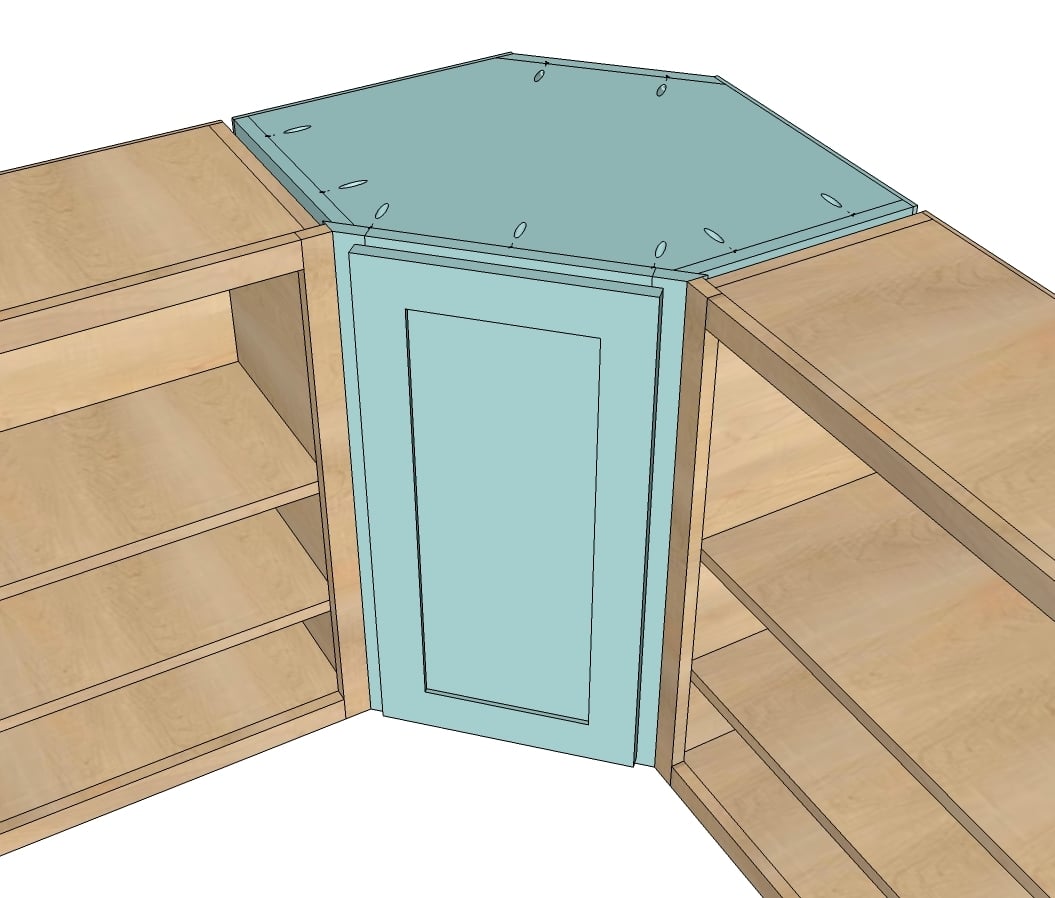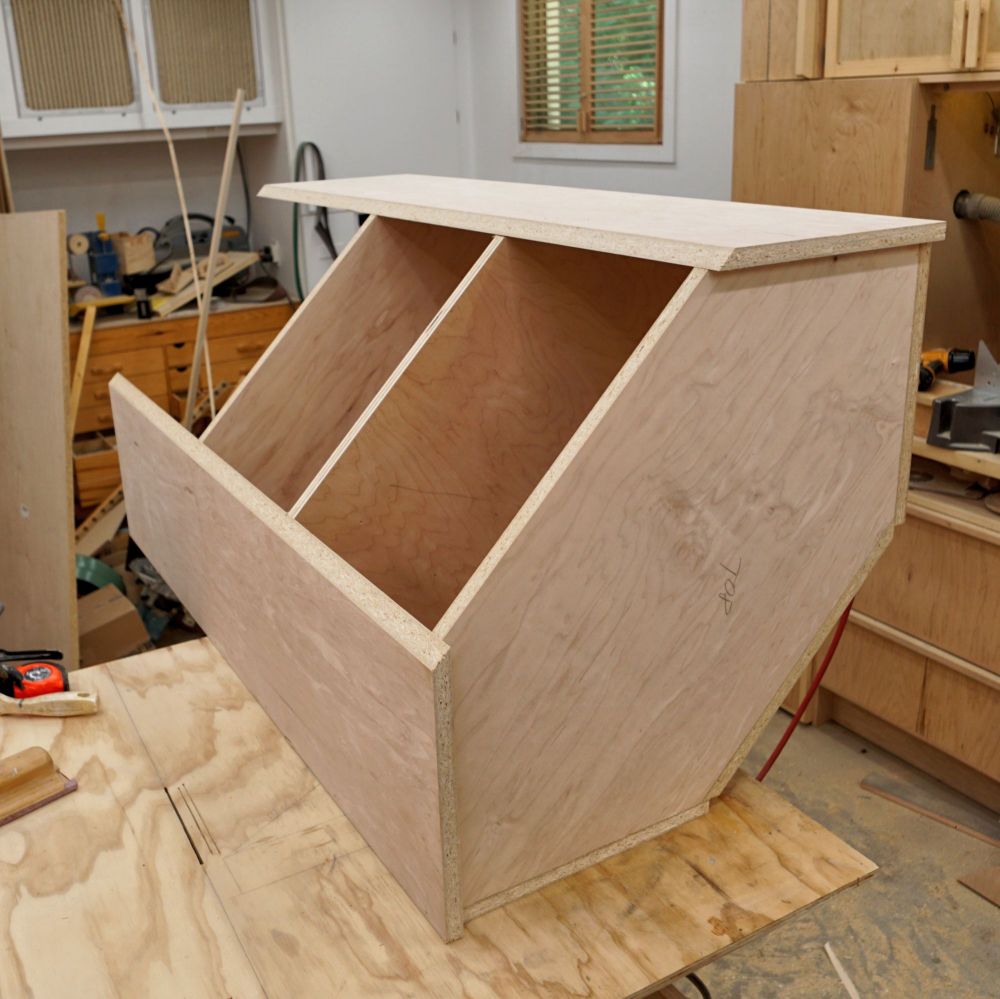Corner Cabinet Design & Planning: Corner Cabinet Diy Plans

Corner cabinets offer a unique way to maximize storage space in any room. They are particularly useful in small spaces where every inch counts. But choosing the right type and planning the design can be challenging. This section will guide you through the process of designing and planning your corner cabinet.
Types of Corner Cabinets
Corner cabinets come in various styles, each with its own advantages and disadvantages. Understanding these differences will help you choose the best option for your needs.
- Base Corner Cabinets: These are the most common type, typically found in kitchens and bathrooms. They offer ample storage space and can be customized with various features, such as drawers, shelves, and pull-out trays.
- Wall Corner Cabinets: These cabinets are mounted to the wall, offering a more space-saving option compared to base cabinets. They are often used in smaller spaces like bathrooms or laundry rooms.
- Lazy Susan Corner Cabinets: These cabinets feature a rotating platform that makes it easy to access items stored in the back. They are ideal for storing spices, canned goods, or other frequently used items.
- Blind Corner Cabinets: These cabinets are often used in kitchens to utilize the corner space without sacrificing accessibility. They typically have a pull-out shelf or a sliding door that reveals the contents.
Popular Corner Cabinet Designs
Here are some examples of popular corner cabinet designs that showcase unique features:
- Corner Cabinet with a Curved Front: This design adds a touch of elegance to the kitchen or bathroom. The curved front makes it easy to access the contents and creates a visually appealing focal point.
- Corner Cabinet with Glass Doors: This design is ideal for showcasing decorative items or glassware. The glass doors allow you to see the contents at a glance, making it easy to find what you need.
- Corner Cabinet with Built-in Lighting: This design adds functionality and style to the cabinet. The built-in lighting illuminates the contents, making it easier to see and access items stored inside.
Planning the Size and Dimensions of Your Corner Cabinet
The size and dimensions of your corner cabinet will depend on the available space and your storage needs. Consider the following factors when planning:
- The size of the corner: Measure the width and depth of the corner where you plan to install the cabinet.
- The height of the cabinet: Choose a height that is comfortable for you to reach.
- The number of shelves: Determine how many shelves you need to accommodate your belongings.
- The depth of the shelves: Choose a depth that is suitable for the items you plan to store.
Designing a Corner Cabinet Layout, Corner cabinet diy plans
A well-designed layout maximizes storage space and functionality. Consider these tips:
- Use vertical space: Maximize storage space by utilizing vertical space with multiple shelves.
- Utilize the corners: Design the cabinet to fully utilize the corner space without creating awkward gaps.
- Consider accessibility: Ensure that the shelves are easily accessible and that you can reach all items without straining.
- Think about your needs: Design the layout to accommodate your specific storage needs.
Corner Cabinet Construction

Now that you have your design and plans finalized, it’s time to get your hands dirty and start building! This section will guide you through the process of constructing the corner cabinet, covering materials, cutting, assembly, and crucial techniques for ensuring stability and strength.
Materials List
Before starting, gather all necessary materials. This list includes common woodworking materials and tools.
- Wood: Choose a stable wood for your cabinet frame and shelves, such as plywood, MDF, or hardwood.
- Screws: Use screws that are long enough to securely fasten the pieces together.
- Wood glue: This will help to strengthen the joints and prevent movement.
- Finishing materials: Choose your preferred stain, paint, or varnish for the final look.
- Hardware: This includes hinges, knobs, drawer slides, and any other desired features.
Cutting and Assembling the Cabinet Frame
Cutting the pieces to size is the first step. You can use a circular saw, table saw, or miter saw for accurate cuts. Mark your cuts carefully, ensuring they are precise for a clean and sturdy cabinet. After cutting, assemble the frame using wood glue and screws. Start by joining the sides and back panels, then add the top and bottom pieces.
Corner Joint Construction
The corner joints are crucial for the stability of the cabinet. There are various methods for creating corner joints:
- Butt joints: This simple joint involves joining two pieces at a 90-degree angle. Ensure a tight fit and use strong glue and screws for reinforcement.
- Dado joints: This method creates a groove in one piece to receive the edge of the other. It offers more strength and stability than a butt joint.
- Rabbet joints: This joint involves creating a recess on one piece to receive the edge of the other. It provides a strong and visually appealing joint.
Ensuring Stability
The cabinet needs to be sturdy and withstand everyday use. Here are some tips for ensuring stability:
- Use strong wood: Choose stable wood types that won’t warp or crack easily.
- Reinforce joints: Use glue and screws to secure the joints.
- Add bracing: Internal bracing, such as shelves or dividers, can add extra support and prevent the cabinet from sagging.
Tool Safety
Always prioritize safety when working with power tools. Wear safety glasses, hearing protection, and dust masks. Familiarize yourself with the tools before using them, and follow the manufacturer’s instructions.
Finishing Touches & Installation

Your corner cabinet is almost complete! Now it’s time to add the finishing touches that will make it truly shine and integrate seamlessly into your space. This section covers staining and painting options, hardware and decorative elements, secure installation, and tips for maintaining your cabinet’s beauty over time.
Staining and Painting Options
Staining and painting your corner cabinet are essential steps in customizing its look and protecting the wood. Here’s a breakdown of the different options and considerations:
* Staining: Staining enhances the wood’s natural grain and color, adding depth and richness. Choose a stain that complements your décor and consider factors like the wood’s species and desired finish. Oil-based stains offer deep penetration and a rich look, while water-based stains are easier to clean up.
* Painting: Painting allows for greater creative freedom, enabling you to create a vibrant, unique look. Choose a paint that’s specifically designed for cabinets, ensuring durability and a smooth finish. Consider using a primer to enhance adhesion and create a uniform surface.
Adding Hardware and Decorative Elements
Hardware and decorative elements play a crucial role in both functionality and aesthetics.
* Hardware: Choose functional and aesthetically pleasing hardware like hinges, handles, and knobs. Consider the style of your cabinet and the overall design of the room when selecting hardware.
* Decorative Elements: Enhance your corner cabinet with decorative elements like moldings, trim, or decorative accents. These elements add visual interest and can complement the overall style of your cabinet and room.
Installing the Corner Cabinet
Installing the corner cabinet securely is essential for both functionality and safety. Here’s a step-by-step guide:
* Measure and Mark: Measure the wall space where you’ll be installing the cabinet and mark the location for mounting.
* Use Level: Ensure the cabinet is level before attaching it to the wall.
* Secure with Screws or Anchors: Use screws or anchors to attach the cabinet to the wall, depending on the type of wall material.
Finishing and Maintenance
Proper finishing and maintenance are essential for preserving the beauty and functionality of your corner cabinet.
* Finishing: Apply a sealant or varnish to protect the stained or painted surface from scratches, spills, and moisture.
* Maintenance: Regularly clean your corner cabinet with a damp cloth to remove dust and debris. Avoid using harsh chemicals or abrasive cleaners that could damage the finish.
Corner cabinet diy plans – Corner cabinets are a great way to maximize space in your kitchen, but getting those handles perfectly aligned can be a real pain. That’s where a cabinet hardware jig diy comes in handy. This DIY project can save you time and frustration, making your corner cabinet plans a whole lot smoother.
Corner cabinet DIY plans are totally your jam if you’re looking to add some unique storage space to your home. You can really make them your own by adding some killer hardware, like black leather cabinet handles , which totally add a touch of edgy chic.
Once you’ve got those plans in hand, you’ll be rockin’ that corner cabinet in no time!
